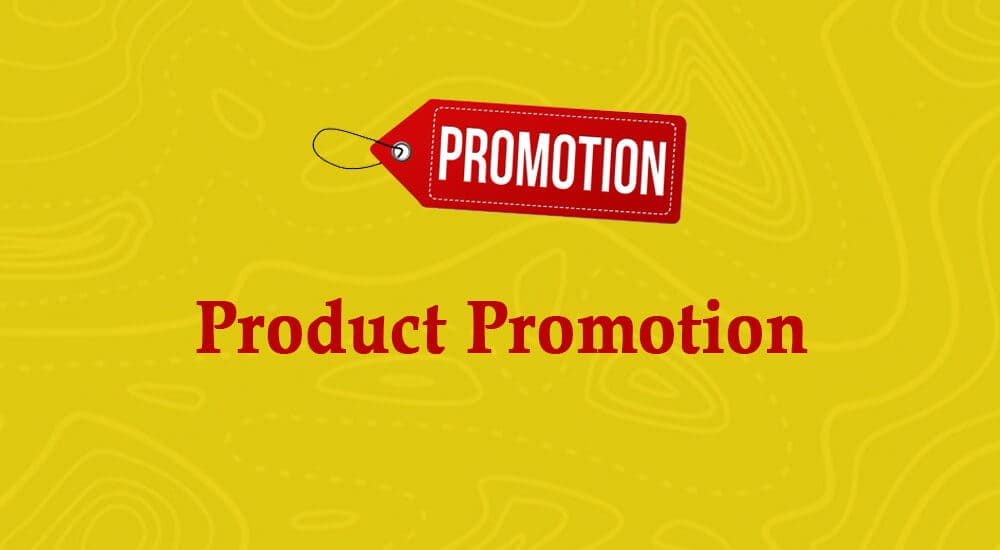Product promotion is a comprehensive marketing strategy designed to increase awareness, generate interest, and drive sales of a particular product or service. This multifaceted approach involves a combination of communication, advertising, and promotional activities aimed at conveying the value proposition of a product to the target audience.
Product merchandising has become a cornerstone of effective marketing strategies, It is the art and science of showcasing a product’s value to the world. It goes beyond mere advertising, diving into a realm where awareness meets persuasion. In this dynamic landscape, businesses employ a myriad of tactics, from compelling advertisements to strategic public relations, all with the goal of not just selling a product but creating a lasting impact. A promotional campaign for a product is the heartbeat of successful marketing, resonating through every channel to captivate audiences, differentiate offerings, and ultimately drive consumer engagement and loyalty.
Here are key aspects of product promotion:
Awareness Building:
Advertising:
Utilize various advertising channels such as print, digital, TV, radio, and social media to reach a broad audience.
Public Relations (PR):
Generate media coverage through press releases, product launches, and other PR activities to enhance BPJS88 visibility.

Creating Interest:
Content Marketing:
Develop engaging content, including blog posts, articles, videos, and infographics, to showcase the product’s features and benefits.
Social Media Marketing:
Leverage platforms like Facebook, Instagram, Twitter, and LinkedIn to engage with the audience, share updates, and create a buzz.
Incentives and Offers:
Promotions:
Introduce special offers, discounts, or limitedtime promotions to stimulate immediate interest and encourage purchasing decisions.
Loyalty Programs:
Implement loyalty programs to reward repeat customers and build long-term relationships.
InStore Displays and Merchandising:
Point of Purchase (POP) Displays:
Create visually appealing displays in physical stores to attract attention and highlight the product’s key features.
Merchandising:
Strategically position products within a store to maximize visibility and create a compelling shopping experience.
Online Presence:
E-commerce Platforms:
Optimize product listings on online marketplaces and your website to facilitate easy discovery and purchase.
Search Engine Optimization (SEO):
Implement SEO strategies to ensure the product appears in relevant online searches.
Product Launch Events:
Launch Parties:
Host events to introduce the product to the market, inviting influencers, media, and potential customers for firsthand experience.
Live Demonstrations:
Conduct live demonstrations or webinars to showcase the product’s functionality and answer potential customer queries.

Partnerships and Collaborations:
Cross-promotions:
Partner with complementary brands or influencers for joint promotions to expand the product’s reach.
Affiliate Marketing:
Collaborate with affiliates who promote the product in exchange for a commission on sales generated through their efforts.
Customer Testimonials and Reviews:
Testimonials:
Feature positive customer testimonials and reviews to build trust and credibility.
UserGenerated Content:
Encourage customers to share their experiences with the product on social media, creating authentic content.
Feedback and Improvement:
Surveys:
Gather feedback from customers to understand their preferences and identify areas for improvement.
Continuous Innovation:
Integrate customer feedback into product development and communicate updates to maintain interest.
Measuring and Analyzing Results:
Key Performance Indicators (KPIs):
Track metrics such as sales, website traffic, conversion rates, and social media engagement to assess the effectiveness of promotional efforts.
Analytics Tools:
Use analytics tools to gain insights into customer behavior, allowing for data-driven adjustments to the promotion strategy.
Effective product promotion requires a strategic and integrated approach, considering the unique characteristics of the product, target audience, and market dynamics. Regularly evaluating the performance of promotional activities and adapting strategies based on insights is essential for sustained success.
In contemporary commerce, product marketing stands as the fulcrum of bridging enterprises and their audience. It transcends the mundane realms of mere transactional engagements, evolving into an intricate narrative that resonates with the aspirations and necessities of consumers. As we navigate the complexities of the marketing landscape, product promotion emerges as the lodestar, steering brands toward recognition, trust, and enduring prosperity. Its denouement transcends the quantifiable metrics of sales, imprinting itself in the hearts of consumers who discover not just products but solutions, value, and gratification in the meticulously promoted offerings.
Within the orchestration of imaginative campaigns, strategic communications, and consumer-centric methodologies, product marketing orchestrates a symphony that synchronizes brand identity with enduring consumer allegiance. It represents the denouement, a reverberating crescendo that leaves an indelible imprint on the consumer consciousness, ensuring the product rightfully claims its pinnacle in the limelight of market relevance.
